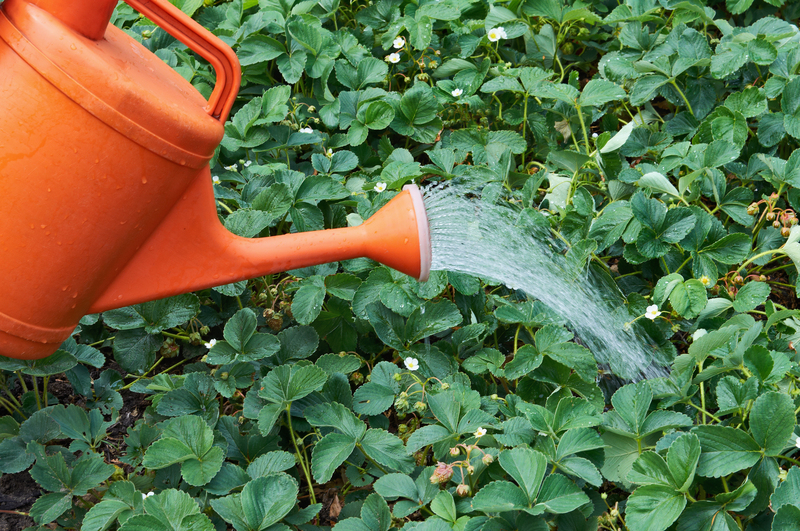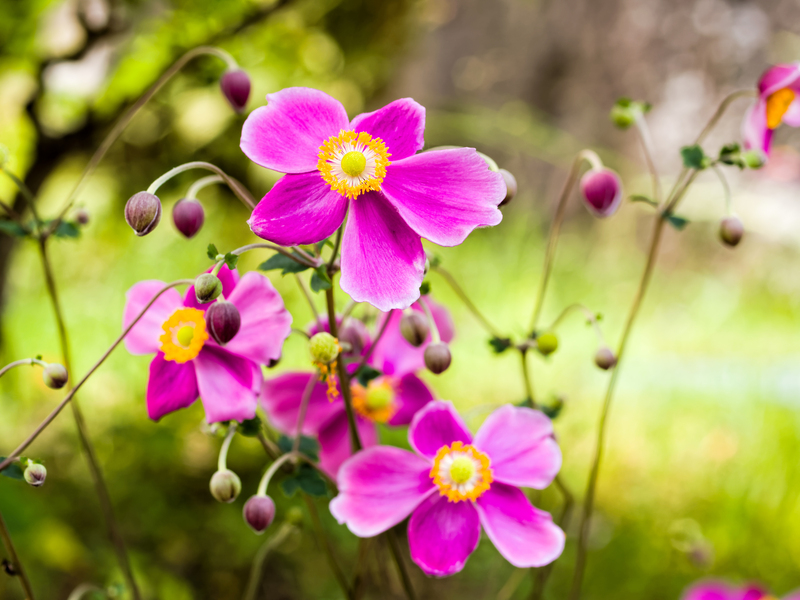Building a Garden that Captivates a Child's Heart
Posted on 10/06/2025
Building a Garden that Captivates a Child's Heart: Inspiring Outdoor Wonder
Imagine tiny footsteps pattering on soft earth, eyes wide with curiosity, and laughter bubbling as your child explores a living wonderland just steps from your backdoor. Building a garden that captivates a child's heart is much more than growing pretty flowers; it's about nurturing curiosity, creativity, and a lifelong love for nature. In this comprehensive guide, discover how to transform any outdoor space into a magical, learning-rich environment that will enchant the young and young at heart.
Why Create a Child-Friendly Garden?
A child-centric garden acts as an open classroom brimming with sensory experiences and learning moments. Whether you have a sprawling backyard or modest balcony, designing a garden to captivate your child offers lasting benefits:
- Physical development through digging, planting, and moving.
- Mental stimulation via observation, discovery, and imagination.
- Emotional growth as children gain confidence nurturing living things.
- Environmental stewardship by fostering empathy for nature and wildlife.

Principles of Designing a Garden for Children
Building a children's enchanting garden isn't about copying adult landscaping in miniature. Instead, focus on these key principles to ensure the space truly speaks to a child's heart:
1. Engage All Senses
- Touch: Choose fuzzy lamb's ear, feathery grasses, or velvety moss.
- Sight: Plant a riot of colors with sunflowers, nasturtiums, and zinnias.
- Sound: Include whispering bamboo, rustling leaves, or a bubbling water feature.
- Taste: Strawberries, cherry tomatoes, and snap peas make delicious additions.
- Smell: Aromatic lavender, mint, and sweet peas turn the air into a perfume.
2. Encourage Exploration and Adventure
Create hidden corners, winding paths, and secret hideouts like willow tents or bean teepees to spark curiosity and promote imaginative play.
3. Prioritize Safety
- Use non-toxic, thorn-free plants.
- Keep walkways level and clear.
- Avoid sharp tools or hazardous chemicals.
4. Provide Opportunities for Ownership
Give children space to make their own choices--let them select plants, decorate pots, or add personal touches. Ownership fosters pride and a true sense of connection to the garden.
Planning Your Magical Child's Garden
Selecting the Right Space
A child-enchanting garden doesn't require acres. Assess your available area:
- Sunny backyard? Zone sections for vegetables and flowers.
- Urban patio? Use raised beds, pots, and vertical gardens.
- Sideyard or narrow strip? Train climbing plants up fences or trellises.
*Regardless of size, safety and accessibility should always come first.*
Choosing Plants That Win Heart and Imagination
When it comes to plants that captivate children's hearts, focus on those that provide instant appeal and regular rewards:
- Sunflowers: Towering blooms for sunny smiles and seed harvesting.
- Snapdragons: "Talking" flowers that open and close like puppet mouths.
- Pumpkins: Watch tiny green fruit swell into jack-o'-lanterns.
- Sensory herbs: Mint, basil, and lemon balm for rubbing and sniffing.
- Strawberries: Sweet, bright, and fun to search for.
- Sugar snap peas: Crunchy and edible tips right from the vine.
- Mosses: Create soft, secret fairy spots.
Want insects and birds to join the fun? Add butterfly-attractors like milkweed or bird-friendly sunflowers and black-eyed Susans.
Incorporating Child-Friendly Structures
- Stepping stones (painted or engraved with names, stories, or discoveries)
- Miniature fairy or gnome gardens with doors, houses, and tiny figures
- Climbing frames for beans, sweet peas, or even edible gourds
- Water play areas such as shallow birdbaths or pebble streams
- Bug hotels crafted from bamboo, sticks, and recycled materials
Making the Garden Interactive: Activities and Projects
The best child-inspired gardens invite hands-on activity, learning, and fun. Here are some ways to keep your budding gardener engaged throughout the seasons:
1. Planting Parties
- Hold a family seed-starting day every spring
- Let your child poke seeds into the soil and design the arrangement
- Mark each planting spot with decorated labels
2. Nature Journaling
- Provide a waterproof notebook and chunky colored pencils
- Help your child draw plants, insects, and birds, recording dates and discoveries
- Turn observations into stories or poems as creative writing practice
3. Scavenger Hunts
- Make checklists of leaves, bugs, flowers, and birds to spot
- Include colors, textures, and scents as clues to spark attention
- Offer prizes like picking a bouquet for the dinner table
4. Themed Gardening Projects
- Rainbow Gardens: Grow a flower in every color and arrange them in a magical pattern.
- Pizza Beds: Let kids plant tomatoes, basil, oregano, peppers--all the fixings for homemade pizza.
- Fairy Tale Trails: Add miniature castles, fairy doors, or story stones that prompt creative storytelling.
- Wildlife Welcomes: Build birdhouses and butterfly puddling stations.
5. Decorating and Personalizing
- Paint rocks and pots with names, animals, and patterns.
- Hang windchimes, homemade mobiles, and colorful streamers.
- Use child-crafted signs to mark "secret" paths and destinations.
Maintenance Tips for an Ever-Enchanted Child's Garden
Keeping it Manageable
- Choose hardy, low-maintenance plants for stress-free care.
- Mulch well to suppress weeds and retain moisture.
- Select raised beds or containers to help little hands reach easily.
Involving Children in Upkeep
- Assign a weekly watering schedule with small, easy-to-use watering cans.
- Let kids "deadhead" spent flowers, and explain how this helps new blooms appear.
- Encourage observation--ask your child what changes they see each week.
*Remember:* Perfection isn't the goal! Messiness, experimentation, and surprises are part of the magic of a children's heart-capturing garden.
Benefits Beyond the Backyard
What will your child gain from a garden built to captivate their heart?
- Curiosity and confidence: Children thrive when invited to explore and experiment.
- Stronger family bonds: Gardening becomes a shared story and tradition.
- Healthier lifestyle: Kids are more likely to try homegrown fruits and veggies.
- A lifelong love for nature: Today's playtime gardeners can become tomorrow's environmental stewards.

Frequently Asked Questions
What are some good first plants for small children?
- Radishes (fast growers and fun to pull up)
- Sunflowers (easy and dramatic)
- Nasturtiums (edible flowers with peppery taste)
- Mint (vigorous, aromatic, and nearly indestructible)
How can I make my child's garden safe?
- Only choose non-toxic, child-friendly plants
- Avoid using pesticides or chemical fertilizers
- Install low borders or fencing to keep kids in designated play areas
- Supervise tool use and provide age-appropriate equipment
What if I don't have a yard?
- Use balcony rail planters, window boxes, or indoor grow lights for edible and sensory plants
- Get creative with recycled containers--milk cartons, tins, or old shoes!
- Host monthly "garden days" at community gardens or parks for hands-in-the-dirt fun
Conclusion: Build a Living Memory, Not Just a Garden
Building a garden that captivates a child's heart is less about the perfect landscape, and more about the stories, laughter, and discoveries that grow between the green. When you dedicate even a small piece of your world to enchantment and exploration, you nurture more than plants--you tend the roots of curiosity, resilience, and joy that will sustain your little gardener for a lifetime.
Start small, grow together, and watch as your child's love for nature blossoms in every petal, leaf, and giggle along the way.



